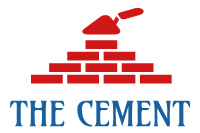Dangote Cement Plc yesterday listed steps it’s taking to increase the supply of cement in order to meet the huge demand for the commodity as well as reduce the price of cement.
Dangote Group’s new Chief Commercial Officer, Mr. Rabiu Umar, at a media briefing in Lagos, yesterday, expressed optimism that the price of cement would decrease once Dangote Cement, a dominant player in the sector brings into operation its new line at Obajana, Kogi State, as well as its new line in Okpella, Edo State and the reactivation of its Gboko plant that has been shut down for almost four years.
Apart from increasing its volume of output, the Dangote Cement has also put a hold on its export market in order to ensure that Nigeria has a sufficient supply of cement, he said.
The price of cement in the country has risen sharply from about N2,500 as of the fourth quarter of 2020, to about N4,000 presently. Dangote Cement controls 60 per cent of the market in Nigeria.
Explaining the reason for the surge in cement price, Umar said: “There is a surge in demand immediately after COVID-19 disruption. This surge in demand is not a localised Nigerian phenomenon as a couple of countries around the world like Pakistan and Mexico, among others are seeing a rising incident of demand for cement.
“So the question is what is the Dangote Cement Plc doing to bring it down? First and foremost we have invested in a new line that has been completed in Obajana, which is waiting for the power plant for us to start bringing out more cement.
“We also have a new line in Okpella, Edo State, which is going to start operation very soon. Also we have restarted one of our plants in Gboko, Benue State that has not worked for almost four years all in a bid to make sure that there is enough production to supply the market.”
He added: “What drives price is the interplay of the market forces of demand and supply. As a business, we have not increased our price. And the only way to deal with this upsurge is to have adequate capacity to supply the market by producing more to prevent a break in the supply chain that will lead to arbitrage.
“So, what we are trying to do is to ensure that we increase our supply of cement in the market and we believe that will help to manage the skyrocketing prices of cement.
“We have also stopped exporting cement to ensure that we meet local demand in spite of the fact that the foreign exchange from exports is very valuable in times like this.”
He added that it would be difficult to control ex-factory prices, which are responsible for propelling the prices upward because of the number of intermediaries in the distribution chain.
Dangote Cement, according to him, has 500 distributors and about 57,000 retail outlets in the country that would not be easy to police in order to enforce uniform price regime.
“Nobody can say when the price will drop, which is best left for the forces of demand and supply. All these new capacities we are developing are things we are doing as a responsible business organisation to ensure that we have enough supply that will meet the demand and shift the market to a new equilibrium since pricing is nothing but the willingness to buy and willingness to sell at a price within a given period. But what we are certain of is that demand and supply will always determine the price of any given product at any time,” he added.
Umar stated that the Dangote Cement would be supplying additional 15,000 tonnes of cement per day to help to stabilise the domestic price of the product, in the next 90 days.
“We are making record sales, meaning that we are selling more than we did over the past years. That tells you that there is a surge in demand. So, we are in a sold-out situation in the country. The main test of demand is when you have more capacity to supply the market,” he stated.
Dangote Cement is also injecting 2,000 brand new trucks in order to make sure that the distribution of the increased output of cement to the market is taken care of.
“All these efforts will lead to the creation of 3,000 new direct jobs in the economy,” Umar said.
He added that the group has a system that takes care of proper governance of its distributors.
“We ensure regional equity in our distribution to ensure price stability. Our philosophy is to stay with our customers who have been with us for many years,” he said.
Source : thisdaylive.com

